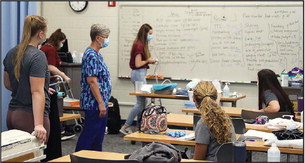CVTC keeping health care facilities staffed


As a primary instructor in Chippewa Valley Technical College’s Certified Nursing Assistant (CNA) classes, Myra Sandquist Reuter knows that her students often have different care...


As a primary instructor in Chippewa Valley Technical College’s Certified Nursing Assistant (CNA) classes, Myra Sandquist Reuter knows that her students often have different care...